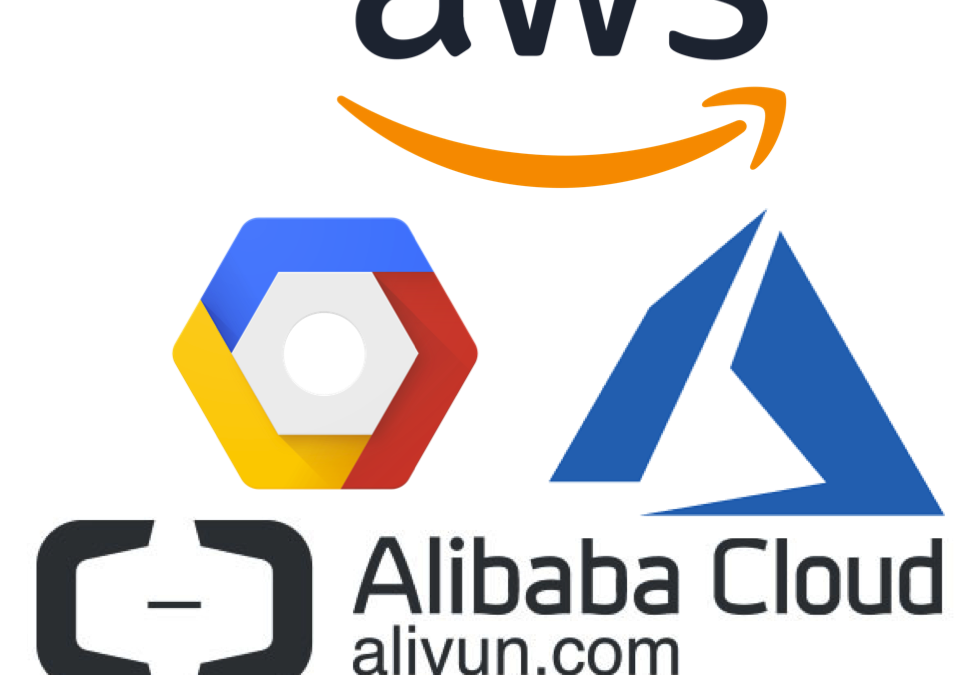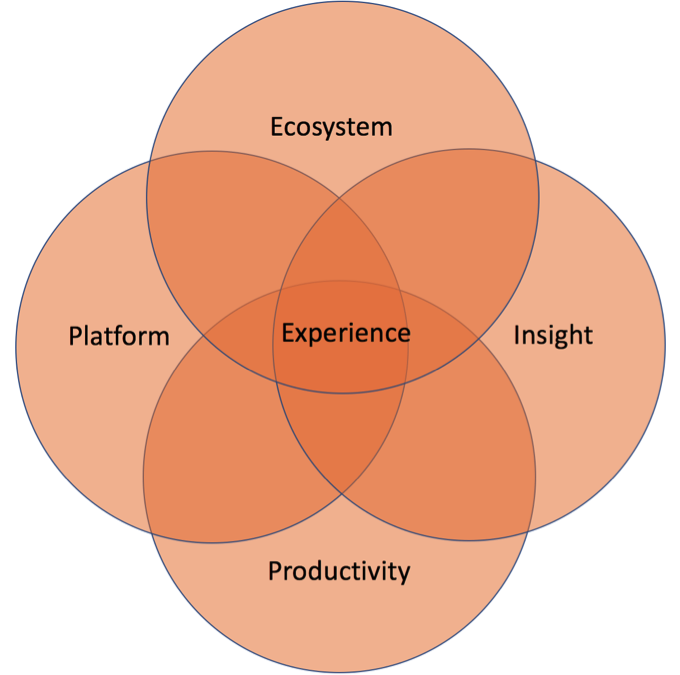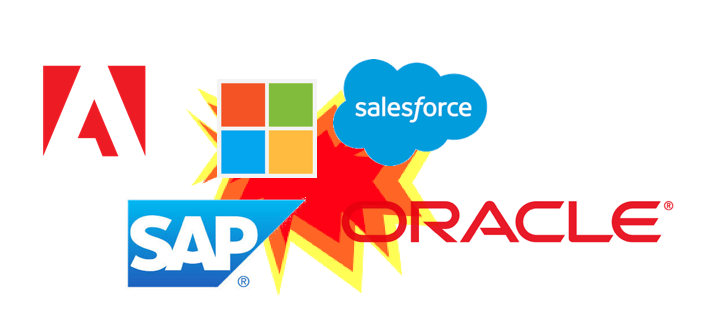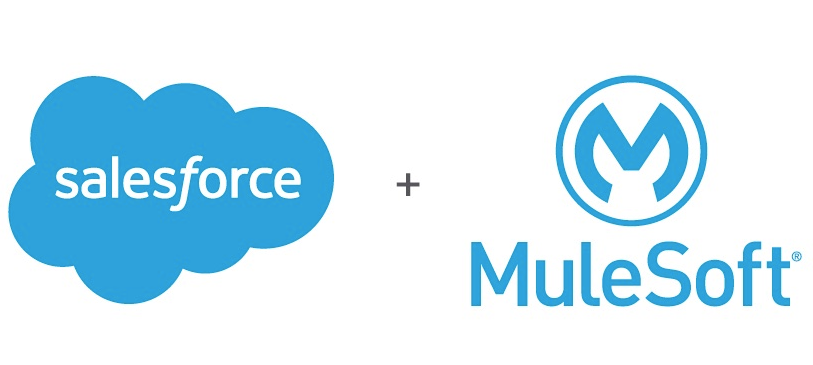
by twieberneit | Oct 15, 2018 | Analysis, Blog |
In the past three posts of this series I have covered the definition of a platform, followed by a brief analysis of the big four players in the customer experience world, namely Microsoft, and SAP, followed by Salesforce and Oracle. And then there are the IaaS Platform Providers Of which there are mainly four, although Gartner Group lists six of them in their 2018 Magic Quadrant for Cloud Infrastructure as a Service, Worldwide! And this drop from 14 vendors in 2017 to just six in 2018 already shows how much consolidation is going on in this market. But why even mention them here? After all this text originated as an analysis of the big business software vendors. Cloud infrastructure provides are important for two reasons: They do provide the raw computing power, the storage, networking resources, etc. for business workloads in a highly elastic way – including the ability to scale up and down in (near) real time. IaaS platforms also more and more contain and offer the PaaS portion that is necessary to offer value added services. In essence, the big six of the IaaS providers that are covered by the Gartner Group offer a technology platform, an ecosystem, insight, and productivity tools. The only thing that they are not really doing – yet – is offering rich, integrated business applications. But back to why I do see only four main IaaS providers going forward. These famous four are AWS, Microsoft, Google, and Alibaba. Of course with AWS having a tremendous lead for now, with Google and Microsoft struggling for the second spot, and with new kid on the block Alibaba growing...

by twieberneit | Sep 11, 2018 | Blog |
More Food for Thought In the last article Clash of Titans – Microsoft and SAP weigh in of this little series, I discussed the strategy of two of the big four and how they are positioned in the platform play of the business software titans – and others. This article covers the other two: Oracle and Salesforce. These business software vendors are competing in a market that is changing – commoditizing – at a fast rate towards an experience market, and probably beyond, if I follow the argumentation and thoughs of CRM godfather and friend Paul Greenberg. Business application vendors can stay really successful only if they morph into platform players. And this platform is more than just a technology platform, but encompasses four dimensions. The four dimensions that are paramount to be able to deliver great engagements that result in lasting positive experiences are Platform (IaaS/PaaS) Ecosystem Insight Productivity In this article I look at Oracle and Salesforce and how they position themselves in this game of thrones. But now, without further ado, let’s dig into the topic. Oracle Since the launch of what originally was project Fusion and now is Oracle CX, the company has done a remarkable pivot from being an on premise company to becoming a cloud company. The company has its strength in being a full stack provider with a full range of business applications. However, its main strenght is owning the gold standard database engine that runs the majority of business workloads worldwide. From its overall technological profile one could position Oracle somewhere between SAP and Microsoft as it with Open Office also...

by twieberneit | Aug 28, 2018 | Analysis, Blog |
A little recap As it has been some time since I published Clash of Titans – Platform Play, the first part of this little series, let me start with a little recap. The business applications market, especially the CRM market, is evolving fast. CRM has morphed from concentrating on transactions to become an enabler of engagements. Engagements in turn result in experiences. And positive experiences are what companies want to achieve. In a digital world this is possible only if companies rely on a foundation, a (technical) platform. Becoming the provider of the dominant technical platform therefore has become the main goal of of the big business software vendors. However, even governing a great technical platform is not enough. Software vendors that want to be successful platform players need to be able to deliver on four areas to succeed: Platform (IaaS/PaaS) Ecosystem Insight Productivity Only if they deliver on all four aspects are ‘platform players’ able to provide their customers with what they need to involve themselves in digital engagements that result in sustainably positive experiences. I will look at how the big four are measuring up in this and the next article of this little series. Microsoft and SAP will be the starters. Then I will look at Oracle and Salesforce. I might conclude with some surprise additions. But let the games begin! Microsoft Microsoft is the (not so, if you look sharply) hidden champion of this game. Actually, I think that Microsoft is the 800 pound gorilla in this game. It is Microsoft’s objective to become the fabric that connects enterprises of all sizes with their stakeholders,...

by twieberneit | Mar 22, 2018 | Analysis, Blog |
The News On March 20, 2018 Salesforce announced the signature of a definitive agreement to acquire Mulesoft for a whopping 6.5 billion USD – whopping because the 2017 Mulesoft revenues have been at just $296.5 Million, albeit with a $1 billion target for 2021. The press release states that “together, Salesforce and MuleSoft will accelerate customers’ digital transformations, enabling them to unlock data across legacy systems, cloud apps, and devices to make smarter, faster decisions and create highly differentiated, connected, customer experiences.” Mulesoft is recognized by Gartner as a leader in the 2017 Enterprise Integration Platform as a Service Quadrant. The Bigger Picture As I have stated repeatedly before, most recently here, the enterprise software market is engaged in something that can be called a platform war. There are a few big players and some emergent players in the enterprise software market, and then we have a number of companies that come from the infrastructure side of the house. Business applications get commoditized. Therefore the platform becomes crucial in a battle for dominance. And it is not a given that there will be a dominance. Looking at the 4 big software vendors, Microsoft, Oracle, Salesforce, and SAP, they all have different legacies, strengths and weaknesses. They share one weakness, which is that their core business is in a mainly saturated enterprise market. All of them want and need to play their strengths, while mitigating their weaknesses in order to become the dominant player. Looking at Salesforce, one of its key strengths is the brand. Right or wrong, pretty much the first name that comes to mind when thinking CRM...

by twieberneit | Feb 7, 2018 | Blog |
The most important tool that enterprise software vendors have in their respective arsenals is their platform. While Vinnie Mirchandani rightfully states that Enterprise Software Platforms have so far underwhelmed, Denis Pombriant proclaims them the new battleground. In my opinion it is not that new a battleground but as part of the Clash of Titans it is becoming more evident as a battleground. An enterprise software platform was always part of the battle for dominance in the customer engagement – or putting it into (marketing) industry lingo – customer experience market. It is actually an integral part of it. This is largely because of the ongoing commoditization of transactional business applications. But it was sexier to talk about shiny topics like engagement and experience than to talk about the grease and the machinery behind that drives and enables the technical delivery of engagements – note, that there are systems of engagement, but there is nothing like a system of experience. And now topics like chatbots, machine learning, AI, ambient computing, IoT, to name a few, made the machinery – the platform – the new black. A – perhaps not so – brief history When looking at the broad topic of CRM, customer engagement or customer experience, we have seen a lot of change happening since the early days of Sales Force Automation, SFA. Back in the early 90s one of the first topics has been SFA, with a focus on making a distributed sales force more effective and efficient. Contact management came even earlier, call center software and field service quickly followed. The emerging industry was dominated by little players...






